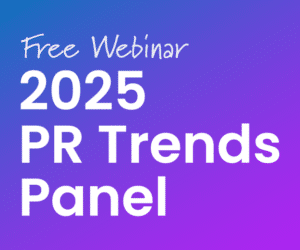Bad design in marketing is like showing up to a wedding in flip-flops—not exactly the impression you want to make. Clashing colors, fonts that strain the eyes, or layouts that look rushed all have the same effect: they turn people away before they even figure out what you’re offering. In a world where visuals are everything, your first impression counts, and bad design shouts, “We didn’t put in the effort!”
Your marketing materials act as your brand’s first handshake. And let’s be honest—nobody likes a weak, clammy handshake. From Instagram posts to your website’s homepage, every design element plays a part in earning trust and projecting professionalism. A chaotic design doesn’t just fail to impress; it muddles your message and leaves your brand looking amateurish. If your campaigns aren’t converting, it might be time to ditch those cringe-worthy graphics that push people away.
Why Design Matters in Marketing
Graphic design is your silent storyteller. While your marketing team crunches numbers and chases KPIs, great design creates an emotional connection. It’s not just about throwing text on an image—it’s about creating visuals so clear and compelling they speak for themselves.
Think about it: would you trust a company that slaps Comic Sans on a bright yellow background? Probably not, right? That’s about as trustworthy as a street vendor hawking “real Rolexes.” Your choice of fonts, colors, and layouts sends a message faster than you can say, “We’re different.”
Good design grabs attention, and if you’re interested, you can check out some effective designs over here. A sleek social media post can stop someone mid-scroll, while a clean, professional website layout keeps visitors exploring instead of leaving. Whether it’s a sharp logo, a well-executed infographic, or a killer ad, strong visuals make your brand look polished and credible.
Characteristics Of Bad Graphic Design
Bad graphic design doesn’t just hurt your eyes—it can hurt your marketing efforts, too. From confusing layouts to inconsistent branding, these design mistakes can turn potential customers into swift scrollers. Let’s dissect the culprits.
Poor Visual Hierarchy
A bad hierarchy makes your design look like a ‘Where’s Waldo’ puzzle. Important information, like calls to action or headlines, gets lost and buried under an avalanche of random text or images. Your design needs a clear focus, but viewers can’t figure out what to look at first without proper alignment, sizing, or contrast.
Cluttered Layouts
If your layout looks like your toddler’s art project, that’s a problem. Overloading designs with too many elements—such as excessive text, unrelated imagery, or chaotic placement—can confuse your audience. A cluttered layout feels overwhelming and makes it hard for viewers to find key information, causing them to bounce faster than a rubber ball.
Inconsistent Branding
When your branding looks like it’s going through an identity crisis, your audience won’t know who you are. If your logo changes colors like a mood ring or your graphics don’t share a common style, you risk appearing unprofessional. Consistent branding builds recognition and trust. Without it, you’re leaving money on the table—up to 33% fewer conversions, to be exact.
Low-Resolution Images
Pixelated graphics scream amateur hour. Nothing discredits a design faster than blurry logos and grainy images. It’s like showing up to a formal dinner in a wrinkled t-shirt. High-resolution images ensure your designs feel polished. Skimping on quality visuals makes your brand look cheap, even if your services aren’t.
Negative Impacts Of Bad Graphic Design
Bad graphic design chips away at your ability to connect, engage, and convert potential customers. Let’s break down the chaos it creates.
Damages Your Brand’s Credibility
Your brand’s design speaks before you do. Clashing colors, unreadable fonts, and pixelated images scream, “We didn’t try.” Customers expect a polished, professional look; seeing low-quality visuals makes them question your expertise, products, or services. Think of it this way: if your website looks like a birthday card from 1998, trust takes a nosedive.
Fails To Engage Your Audience
Audiences scroll fast. Bad graphic design—like cluttered layouts or irrelevant visuals—stops no one in their tracks. Instead of grabbing clicks, it repels users faster than a bad commercial. For example, overly crowded posts or designs with poorly aligned text make it hard to decipher your message. Engagement drops because viewers don’t feel intrigued or connected.
Increases Bounce Rates
A cluttered website or confusing graphics make visitors hit the back button in seconds. If users land on your page and are greeted by mismatched elements, inconsistent headings, or poor navigation, they’ll bounce. Remember, people visit hoping for clarity and ease, not an eye strain challenge.
Misses Conversion Opportunities
Every pixel matters in marketing. You’re sabotaging sales if your call-to-action button blends into an overcomplicated background or your text-heavy design hides key offers. Poor layouts lead to missed chances for users to take action—whether it’s signing up, buying a product, or learning more. Bad design creates hurdles when your marketing should pave a smooth path.
Tips To Avoid Bad Graphic Design
Bad graphic design ruins marketing efforts faster than you can say, “Comic Sans.” Follow these tips to keep your visuals sharp and your audience engaged.
Prioritize Consistent Branding
Inconsistent branding is like showing up at a meeting in mismatched socks. It’s confusing and distracting. Stick to the same colors, fonts, and logos across all marketing materials—your website, social media, or even giveaway merch like water bottles and hats. Consistency makes your brand look professional and helps people recognize you immediately. Remember, consistent branding can boost conversions by 33%, so don’t leave those gains on the table.
Use High-Quality Custom Graphics
Whenever possible, use custom visuals that reflect your brand’s personality. For example, custom photos of your products or team create trust and uniqueness that stock images can’t. Quality images ensure your marketing looks sharp across different platforms, from Instagram posts to large website banners. Blurry graphics? Simply unacceptable.
Simplify And Clarify Your Message
Cluttered designs are the visual equivalent of overpacking for a weekend trip. They overwhelm and distract. Focus on creating a clear visual hierarchy: make essential information easy to spot and avoid cramming every piece of text or image into one layout. Use white space generously—it’s like giving your viewers’ eyes a breather. Simple, clean designs make messages hit faster and stronger. Keep it crisp, because no one likes trying to decode a wall of chaos.
Good design doesn’t just make things pretty; it makes things work. It builds trust, grabs attention, and keeps people engaged long enough to hear what you’ve got to say. So, ditch the pixelated images, embrace some white space, and ensure your brand’s outfit matches from head to toe. Your marketing deserves better than a pajama-level performance.




